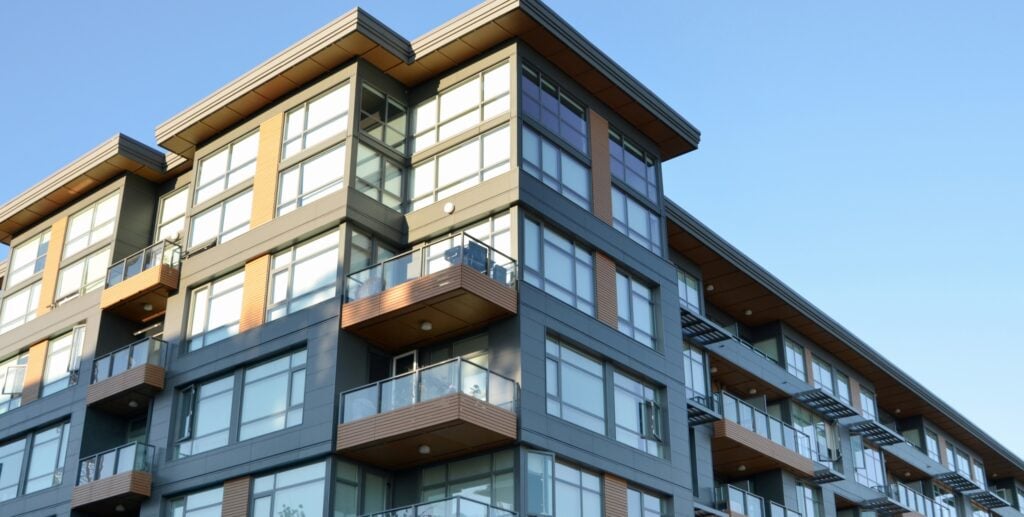When you know how to show a rental property, you’d better position yourself to find a tenant in short order. Here are the six steps you must take to show a rental property to prospective tenants.
1. Prepare Your Property
Before inviting potential tenants to view the property, make sure it’s in top condition. Clean thoroughly, make necessary repairs, and ensure everything is in working order. A well-maintained property not only looks more appealing, but also signals to prospective tenants that you’re a responsible landlord.
Pay special attention to curb appeal; mow the lawn, trim the bushes, and add some potted plants to create a welcoming entrance. Inside, declutter and depersonalize the space so tenants can envision themselves living there.
Remember, first impressions matter, and a clean, well-prepared property sets the stage for a successful showing.
2. Highlight Key Features
During the showing, make sure to emphasize the property’s key features. Point out recent renovations, energy-efficient appliances, and unique aspects like a spacious backyard or a stunning view. Use descriptive language to paint a vivid picture of what it’s like to live there.
For example, instead of just mentioning the kitchen, highlight its modern design, ample counter space, and stainless steel appliances. If the property is in a desirable location, talk about the benefits of the neighborhood, such as proximity to schools, parks, and public transportation.
Highlighting these features can help prospective tenants see the true value of the property.
3. Start the Screening Process
Use the showing as an opportunity to begin the tenant screening process. Observe how potential tenants interact with the property, and ask them questions to gauge their interest and suitability. Inquire about their current living situation, employment status, and rental history.
Let them know about your screening criteria, such as credit checks, income requirements, and references from previous landlords. This initial interaction can provide valuable insights into whether they’ll be reliable, long-term tenants.
Remember to maintain professionalism and respect privacy while gathering the information you need.
4. Explain the Application Process
Clearly explain the next steps in the application process to interested parties. Provide them with an application form, and outline the required documents, such as proof of income, identification, and references. Explain any application fees and the timeline for processing applications.
Be transparent about how you evaluate applications and what factors are most important in your decision-making process. This clarity helps manage expectations and ensures potential tenants understand what’s needed to move forward.
Finally, provide your contact information so they can reach out with any questions or concerns.
5. Follow Up With Interested Parties
After the showing, follow up with prospective tenants who showed genuine interest. A prompt follow-up can demonstrate your professionalism and keep the momentum going. Send a thank-you email or message, reiterating key points about the property and reminding them of the next steps in the application process.
Encourage them to reach out if they have any further questions. This follow-up not only shows that you’re attentive, but also helps you gauge their level of interest and seriousness about renting the property. Effective follow-up can be the key to securing the right tenant quickly.
6. Comply With Fair Housing Laws
Throughout the entire process, ensure you comply with fair housing laws. These laws are designed to protect tenants from discrimination based on race, color, national origin, religion, sex, familial status, or disability. Be consistent in your communication and application procedures for all prospective tenants to avoid any appearance of bias.
Educate yourself on federal, state, and local fair housing regulations to ensure full compliance. By adhering to these laws, you not only protect yourself from legal issues, but also promote a fair and equitable rental process for all applicants.
Individual Showings vs. Open Houses
You have two basic options when showing a rental property:
- Individual showings (one-on-one with prospective tenants)
- Open houses (anyone can visit without an appointment)
Let’s start with the pros and cons of individual showings.
Pros
- Personalized attention: Individual showings allow you to give each prospective tenant undivided attention. You can address their specific questions and concerns, tailoring the tour to highlight features that match their interests.
- In-depth screening: One-on-one interactions provide an opportunity to begin the tenant screening process. You can get a better sense of the tenant’s suitability by observing their behavior and asking pertinent questions.
- Privacy: With individual showings, there’s more privacy and less chance of feeling rushed. Prospective tenants may feel more comfortable discussing sensitive topics like their rental history or financial situation.
Cons
- Time-consuming: Scheduling and conducting individual showings can be time-consuming, especially if you have many interested parties. Each showing requires separate preparation and coordination.
- Limited reach: You can only show the property to one person or group at a time, which might slow down the process of finding a tenant compared to open houses, where multiple parties can view the property simultaneously.
- Scheduling conflicts: Coordinating schedules can be challenging. Prospective tenants may have limited availability, leading to delays in showing the property.
Here are the pros and cons of open houses.
Pros
- Efficiency: Open houses allow you to show the property to multiple prospective tenants at once, saving time and effort. This can expedite the process of finding a suitable tenant.
- Increased exposure: More people can view the property in a shorter time frame, increasing the chances of receiving applications and creating a sense of competition among potential tenants.
- Convenience: Open houses provide a set time for viewings, reducing the need for multiple appointments and making it easier to manage your schedule.
Cons
- Less personal interaction: With multiple people viewing the property simultaneously, it’s harder to give personalized attention or answer specific questions thoroughly.
- Crowd control: Managing many visitors can be challenging. Ensuring everyone has a chance to see the property and ask questions requires good organization and possibly additional help.
- Security concerns: Open houses can pose security risks, as you have less control over who enters the property. It’s important to take precautions to protect the property and any personal belongings.
Final Thoughts
Now that you know how to show a rental property, there’s only one thing left to do: Take action. Soon, you’ll have a top-notch tenant in your property and more money in your bank account.
Save time and money with this refreshing guide to managing your own properties.
In The Self-Managing Landlord, Amelia McGee and Grace Gudenkauf share the secrets of efficient property management, tenant screening and onboarding, and scaling your business—all to help you break free from the 9-to-5 grind and create lasting wealth through real estate.
Note By BiggerPockets: These are opinions written by the author and do not necessarily represent the opinions of BiggerPockets.






















Discussion about this post